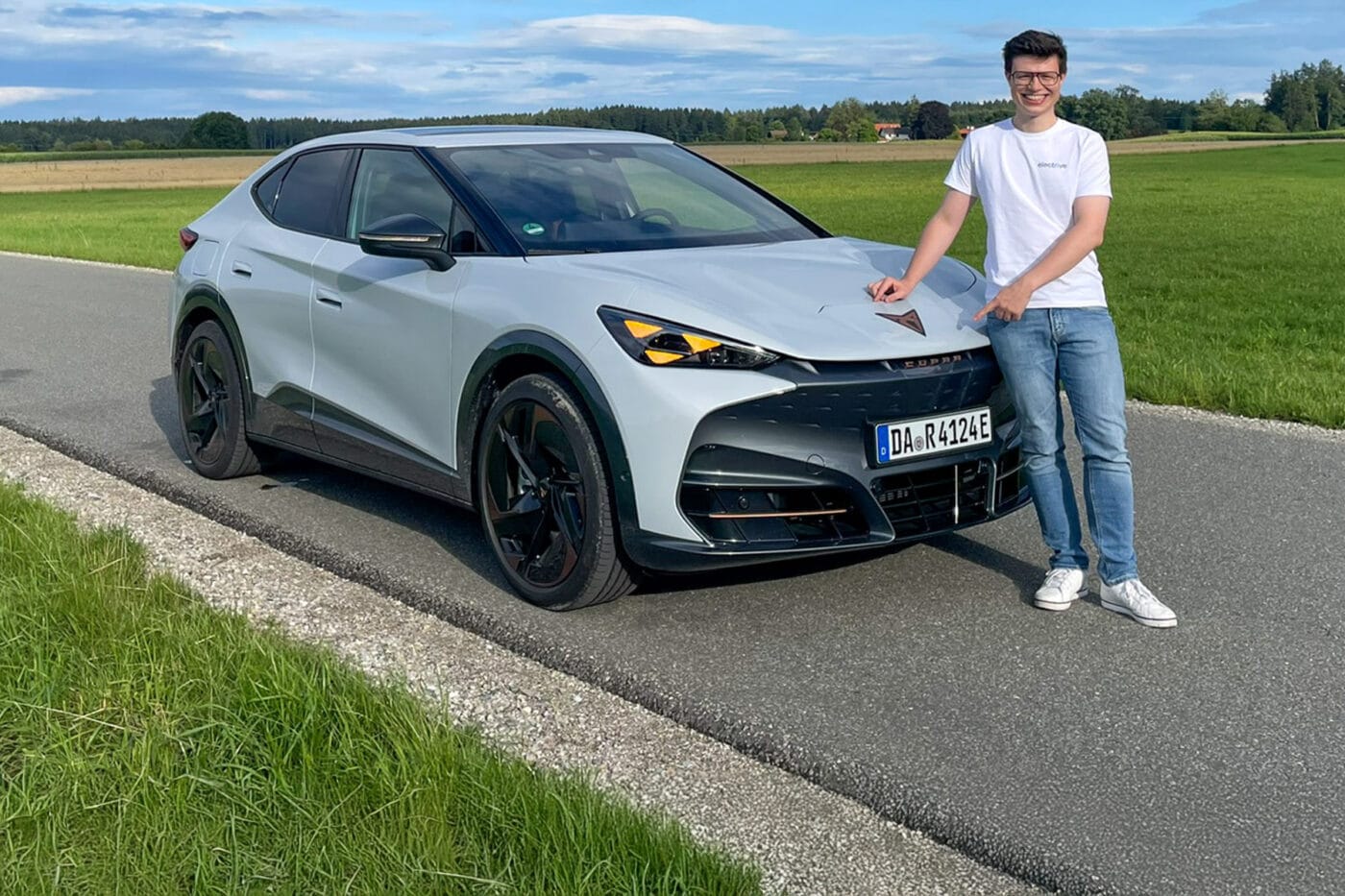
VW’s MEB has found its cool – putting the Cupra Tavascan VZ to the test
Once hailed as a great hope, Volkswagen’s modular electric toolkit (MEB) still evokes mixed feelings. While the strategic decision to opt for a purely electric platform was far-sighted (at a time when many competitors were still muddling through with mixed platforms), its practical implementation was patchy.
Poor material quality and software problems dampened many customers’ enthusiasm for the electric future. Now, Cupra aims to do everything better -with a car that is unmistakably MEB, but much cooler, more beautiful and more mature than many of its sister models.
We tested the Cupra Tavascan extensively and asked ourselves: why wasn’t it like this from the start?
Spanish head-turner
Despite similar dimensions, the Tavascan lacks the half-hearted softness of an ID.5. Clean lines, an angular front end, and striking exterior lighting give it genuine presence. Heads turn regularly, and on the motorway, other drivers tend to clear the left lane when they see its menacing grin in the rear-view mirror.
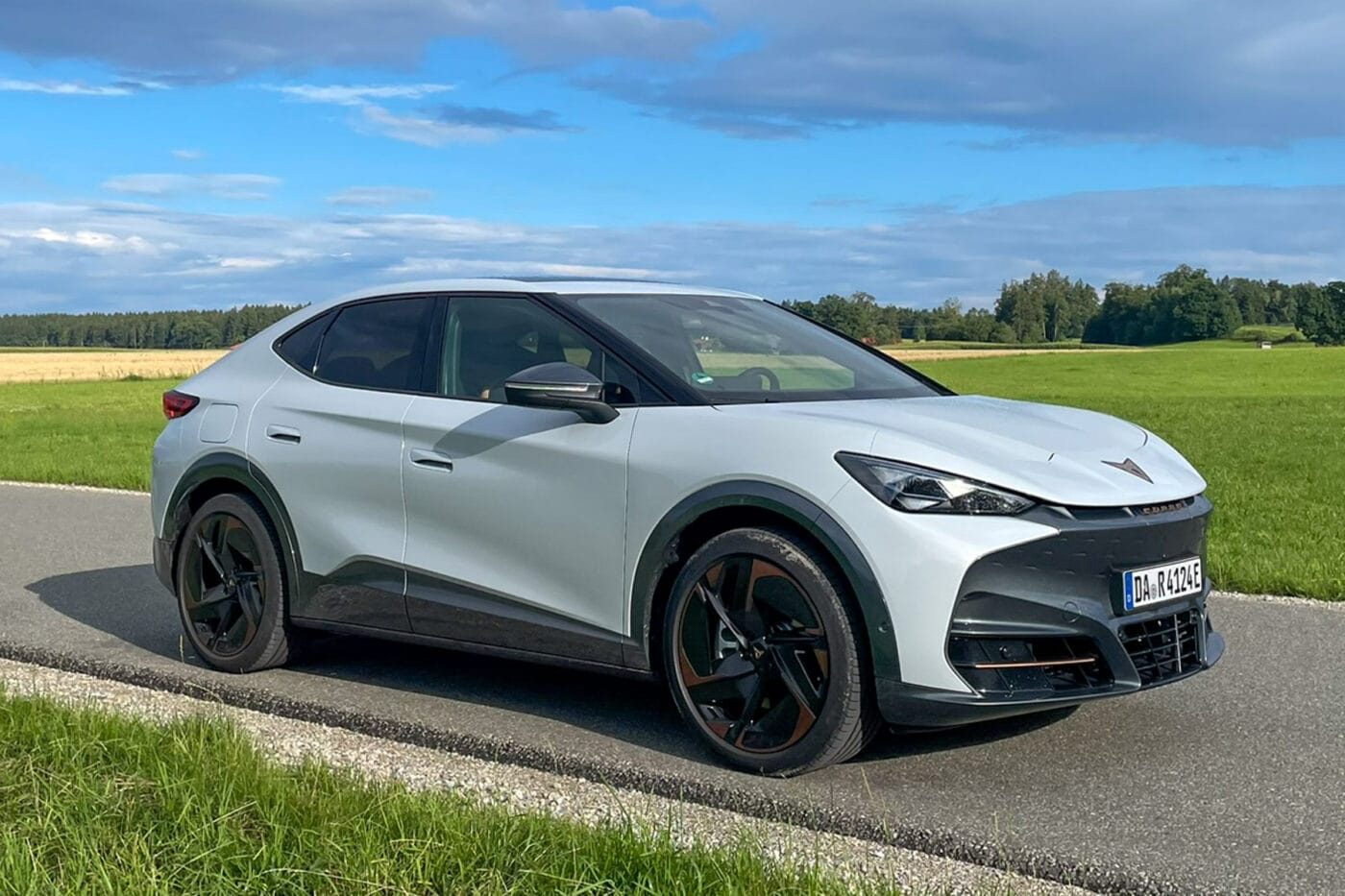
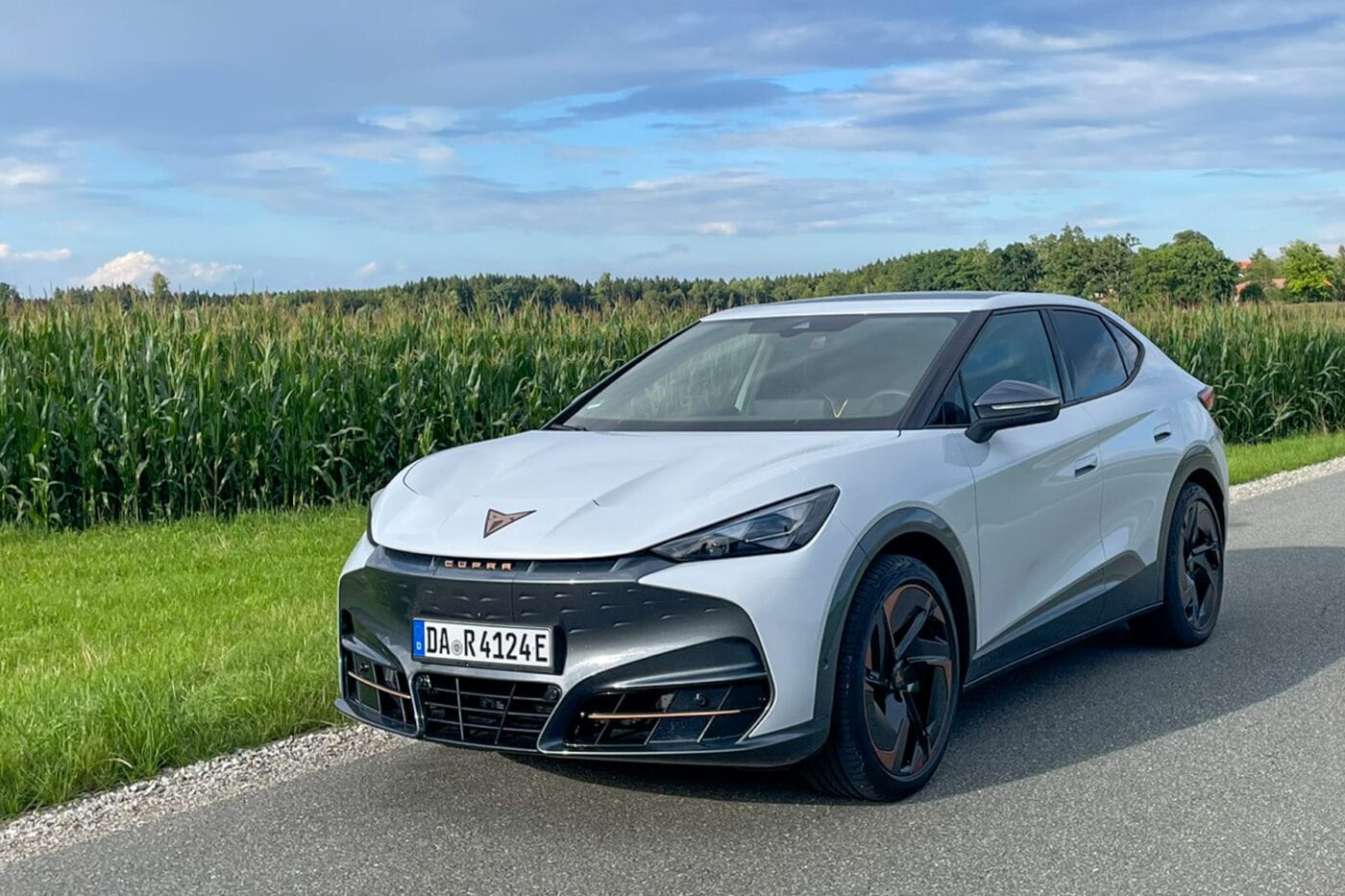
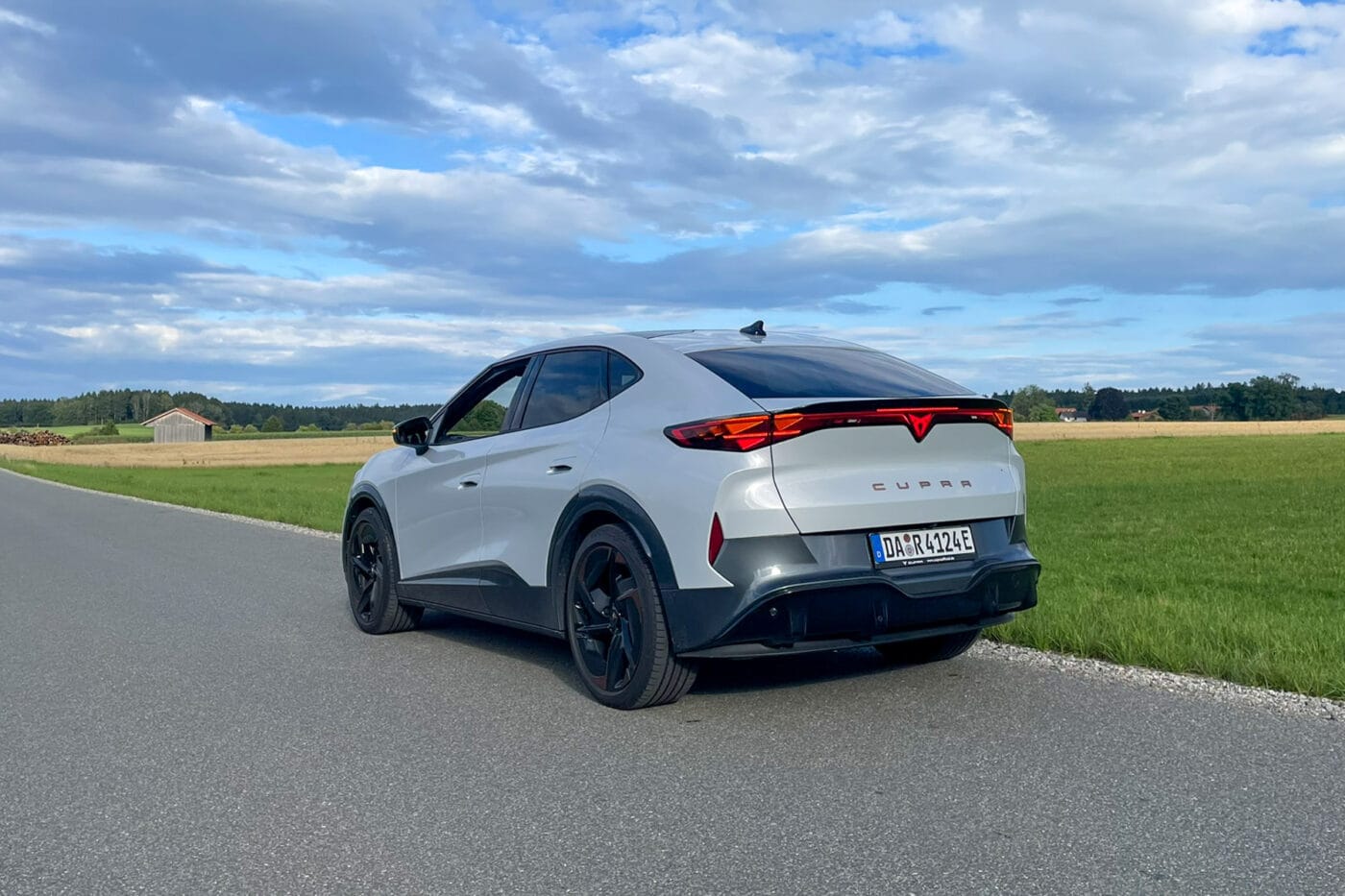
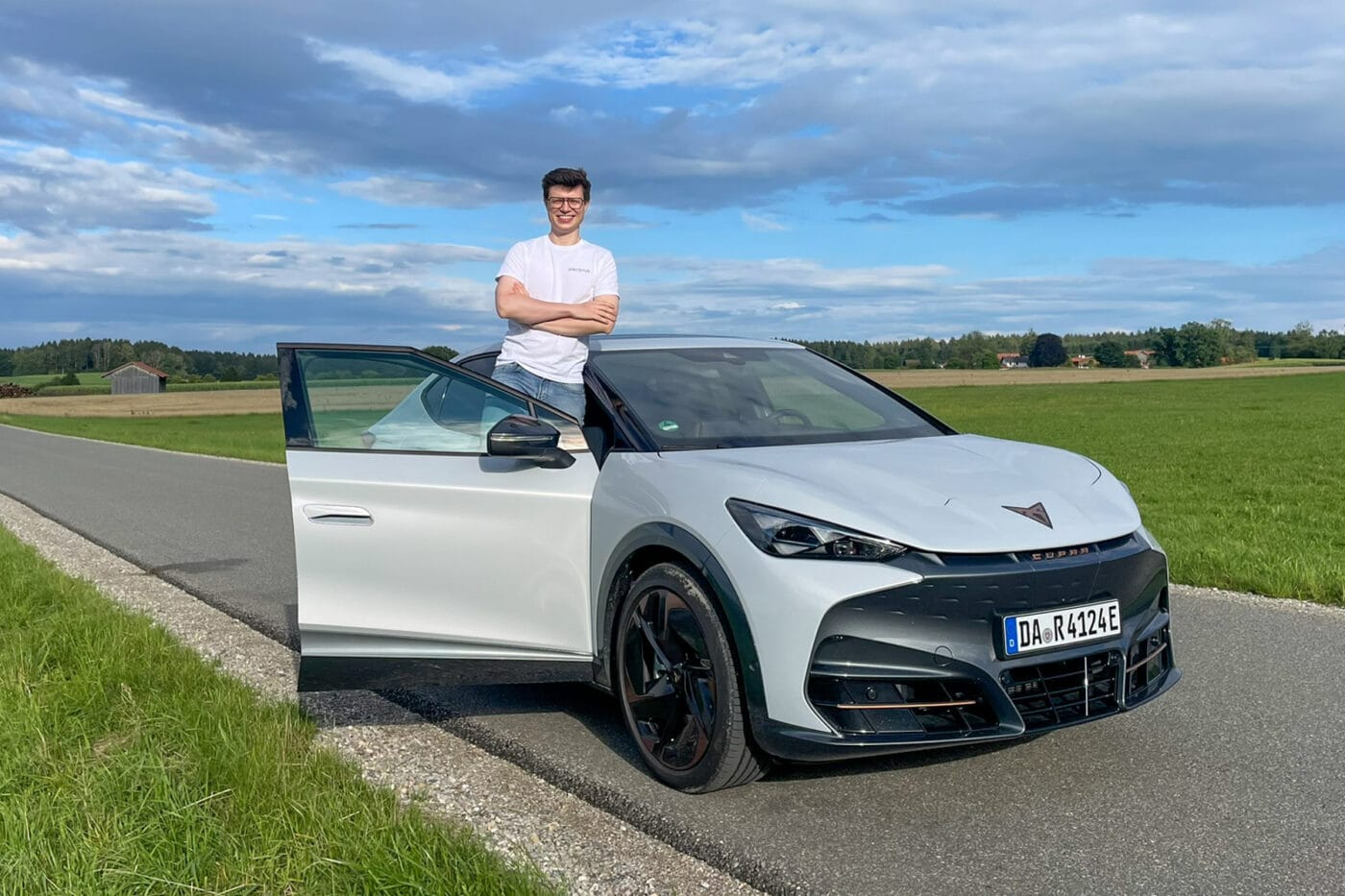
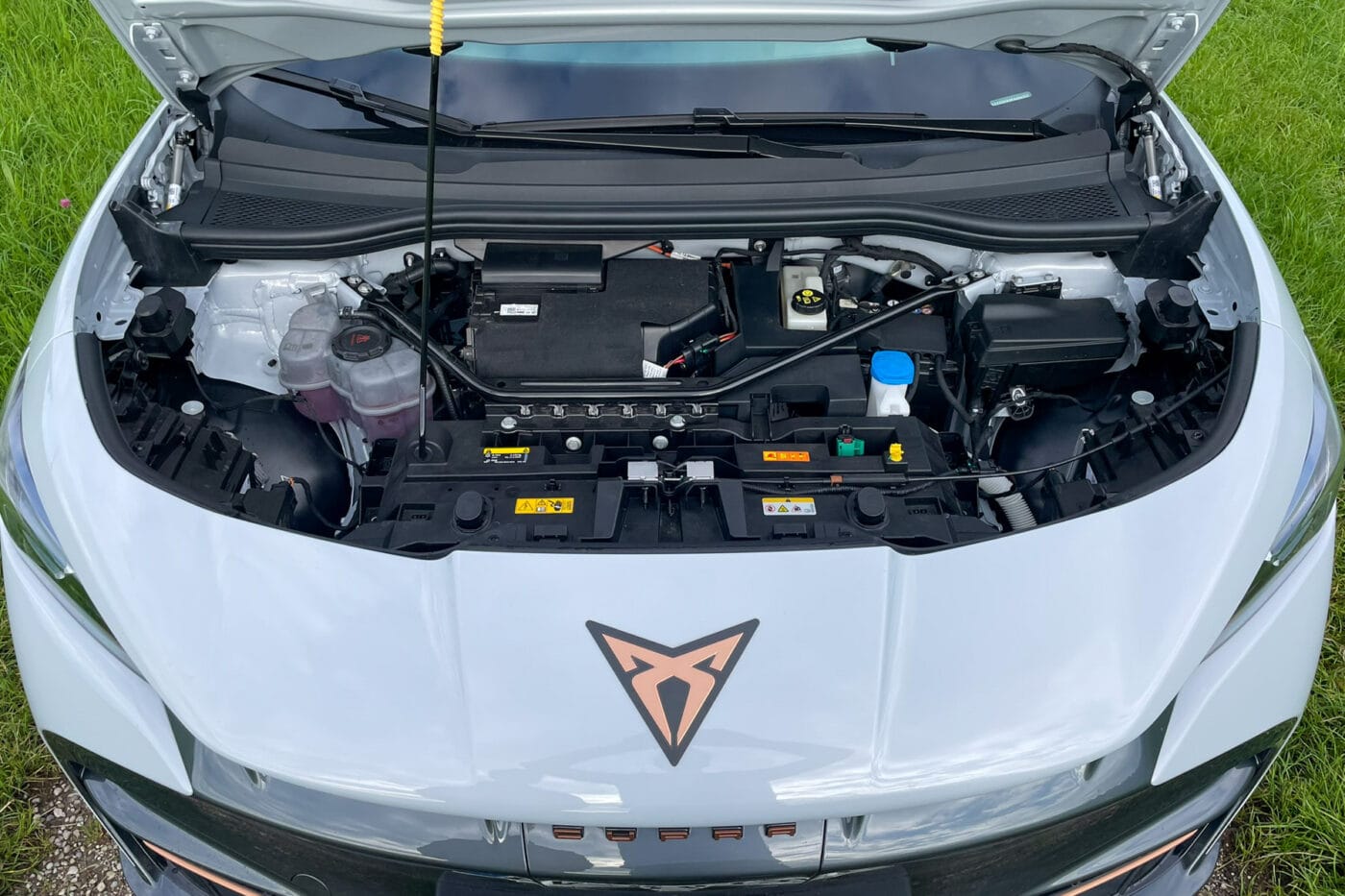
Inside, it is a world away from the bland emptiness of the ID. range – a cross between a spaceship and a Batmobile. Bronze accents, metallic surfaces, door panel detailing and sportier seats set it apart from Volkswagen’s siblings. The build quality is impeccable, nothing rattles or creaks, and no expense has been spared on insulation and foam padding– but tactile quality lags behind. The cockpit looks good, but it doesn’t feel good. Even good-looking plastic is still plastic.
However, the details are spot on: the indicator stalk also houses the wiper controls – once you’ve appreciated this neat arrangement in a Mercedes or older Tesla, nothing else will do.
Cupra masters the software
Starting the car directly by pressing the brake pedal without having to press a start button feels right and logical for an EV. We notice that the ‘cold start’ is now lightning fast: infotainment, cameras and radio are all instantly ready.
In general, the software is now almost perfect. It runs smoothly and responsively, with navigation and charging planner working quickly and accurately, and everything is clean and intuitive. Points are deducted for the lack of integrated music streaming and the still somewhat limited voice control.
MEB strengths remain
Apart from its sporty appearance, the Tavascan cannot completely hide its family ties and modular roots – but this is mostly a good thing. The amount of space is generous for its class, with rear legroom that many rivals cannot match. The suspension is comfortable, wind noise is minimal even at speed, steering is precise, and driving modes add a nice touch.
The recuperation system with different levels, B mode and automatic option sets the benchmark: whether you want one-pedal drive, coasting or variable, radar-based deceleration, there is something for everyone.
The paddle shifters and two buttons for the driving modes on the steering wheel are a convenient addition. The latter offers a choice between ‘Range’, ‘Normal’, ‘Performance’ and ‘Cupra’. The first two do exactly what you would expect, “Performance” makes everything a little faster and ‘Cupra’ makes the car really aggressive, responding quickly to power surges and then hanging back into recuperation with a bite.
Assistance systems impress
Another example of Wolfsburg’s solid home cooking is Travel Assist, a highly underrated feature that the VW Group does far too little to promote across its brands. Critics may argue that it is only a Level 2 system and that VW has dispensed with any Level 3 gimmicks, but the implementation is excellent. Whether crawling through traffic or cruising along the motorway, it keeps the car perfectly in lane and at the right distance. It allows gentle driver intervention without switching off. In traffic jams, it is practical that you can convince it to form an emergency lane with gentle pressure. The head-up display uses colourful lines to clearly show whether the system recognises the lane, and lane changes are quick and reliable.
If you set the distance to the lowest level, the system can even drive really dynamically, accelerate quickly or brake decisively – but never too hard. In the city, the lane departure warning system usually has a hard time between bike lanes, illegally parked cars and turning lanes, but the adaptive cruise control remains reliable: you can crawl through rush hour without touching the pedals once, yet there is no jerking, no tailgating and no excessive gaps.
Enjoy the silence
Compared to Chinese and Korean vehicles, you learn to appreciate the heavenly silence: nothing jingles or beeps. The Tavascan does something that many modern cars have lost: it doesn’t annoy you.
The mandatory speed warning beeper sounds only twice, very gently, and is easy to ignore – a far cry from the piercing whistling of other makes. We didn’t turn it off once because it simply never bothered us.
The augmented reality head-up display with the turn arrows at intersections is still a real joy, like a good co-driver who describes exactly when to turn and where at just the right moment. In addition, the navigation system always knows which lane you are in on the motorway and signals when you need to change lanes via the head-up display and LED bar under the windscreen.
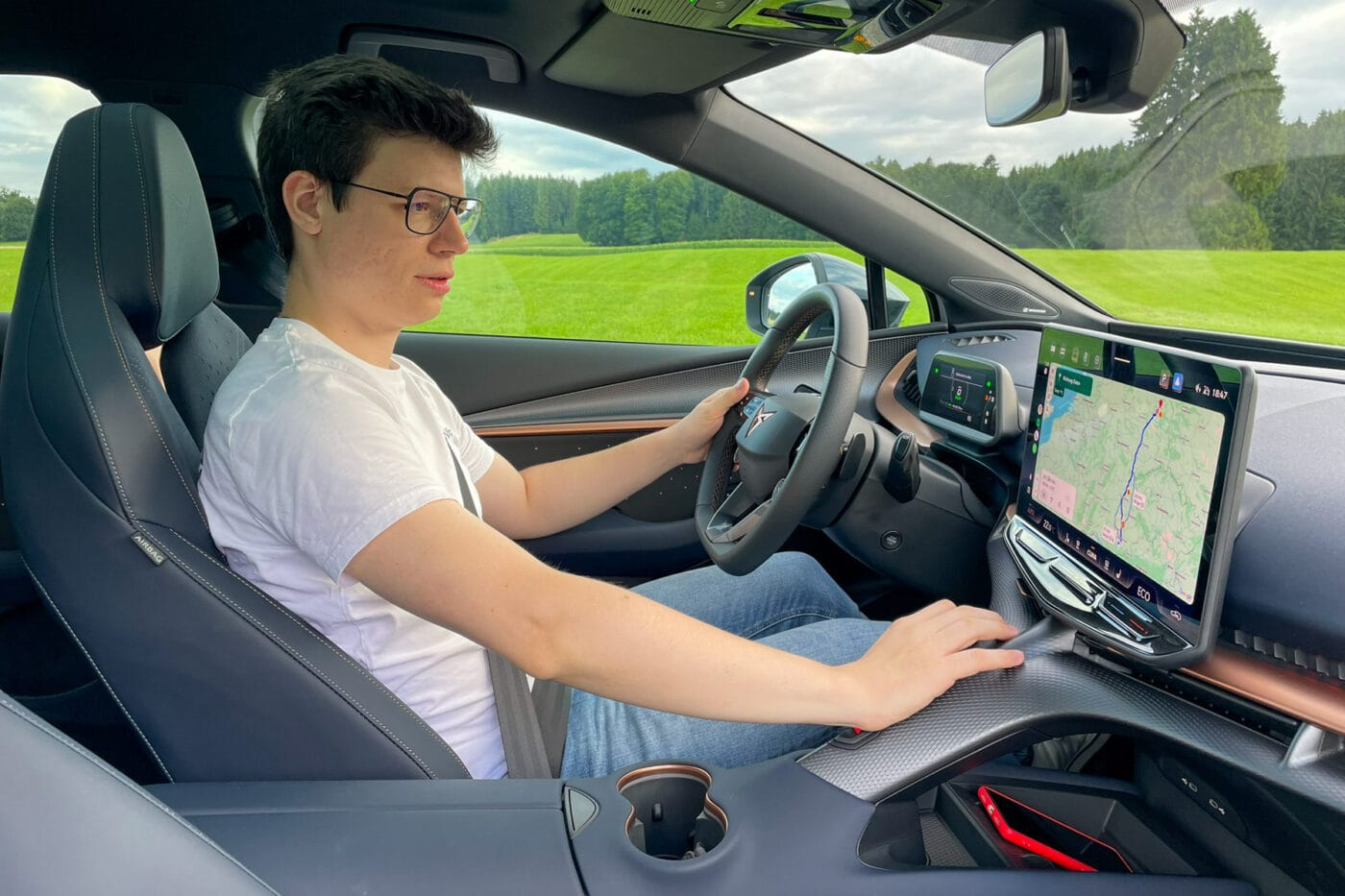
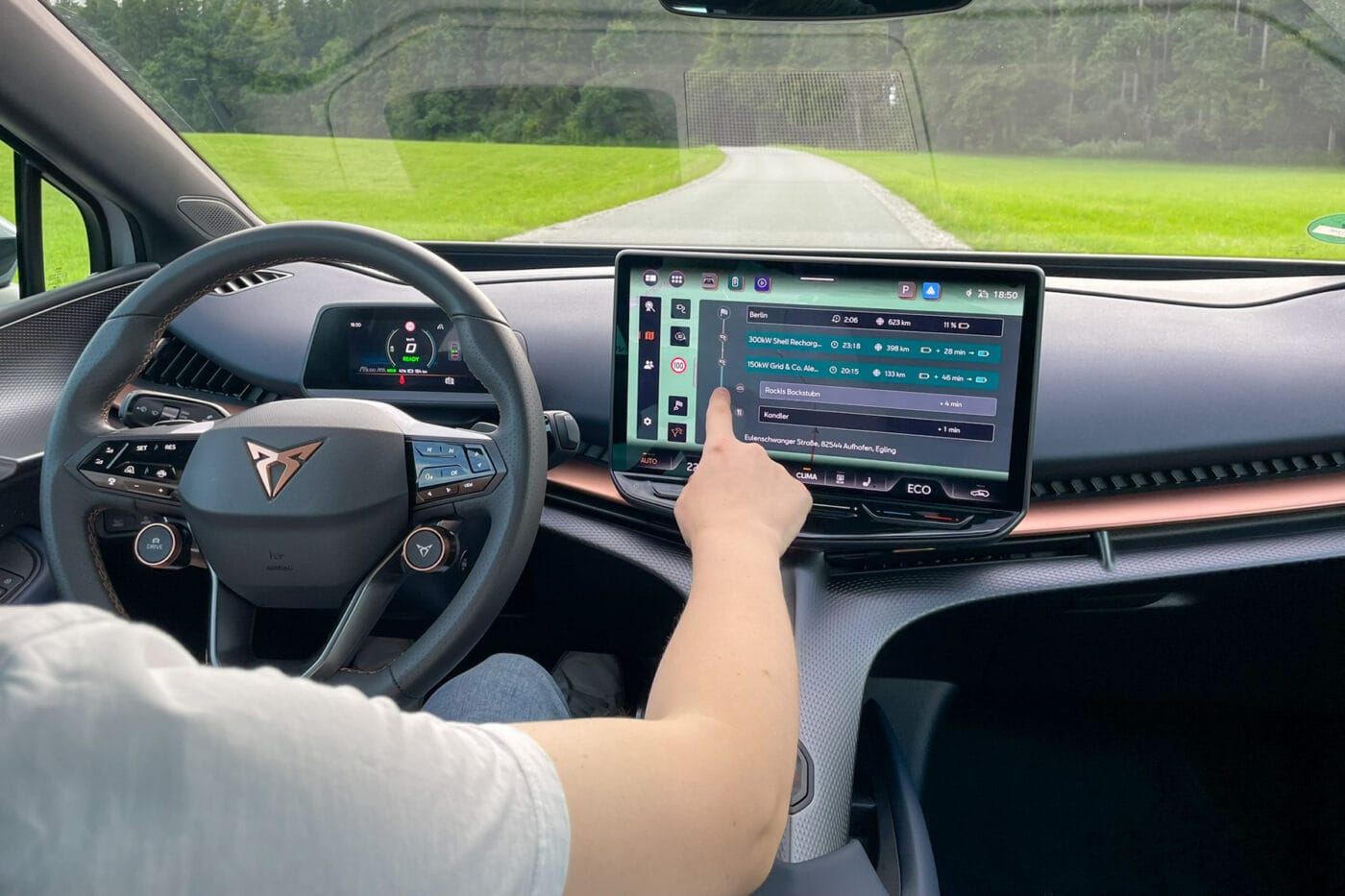
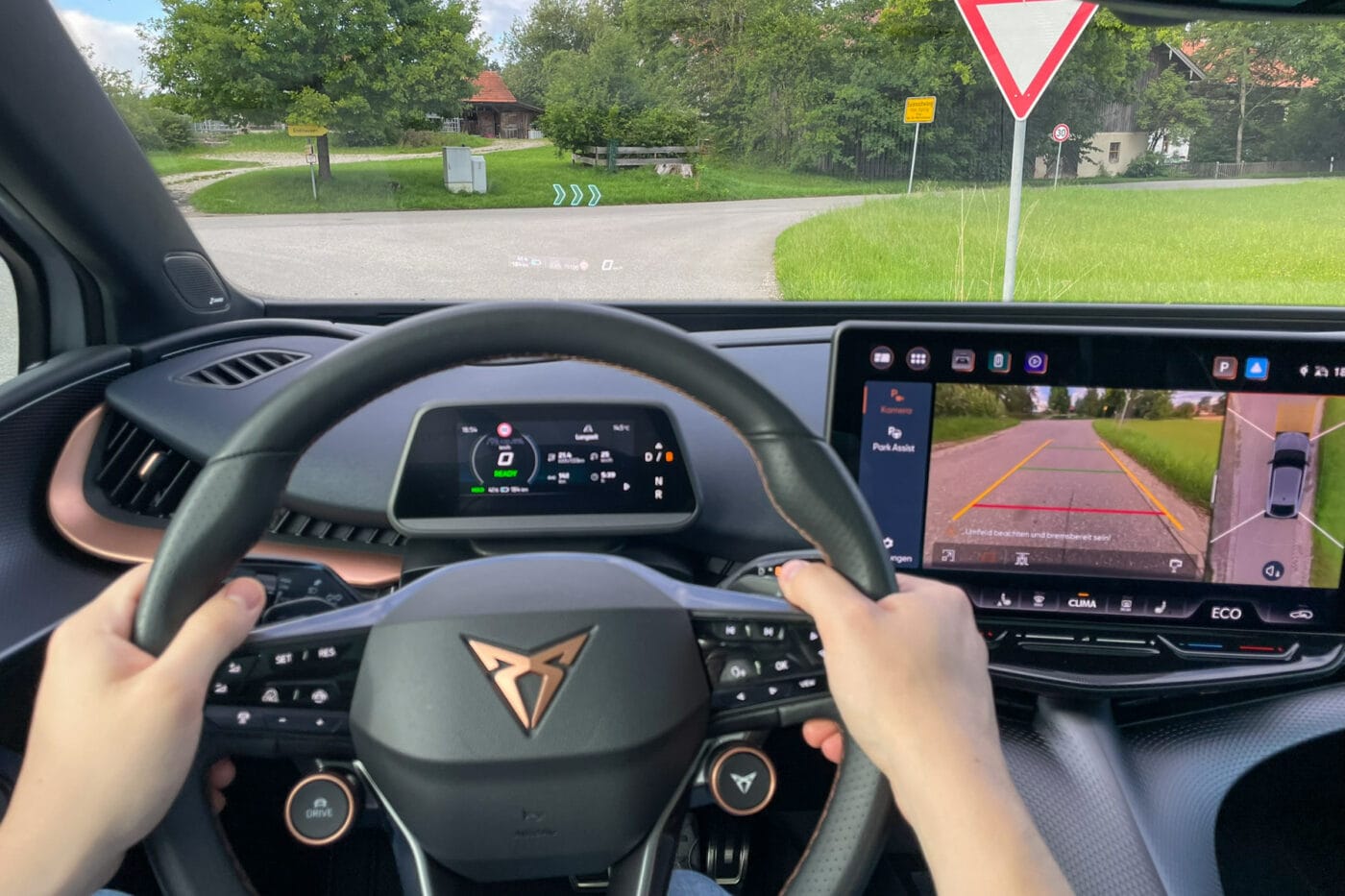
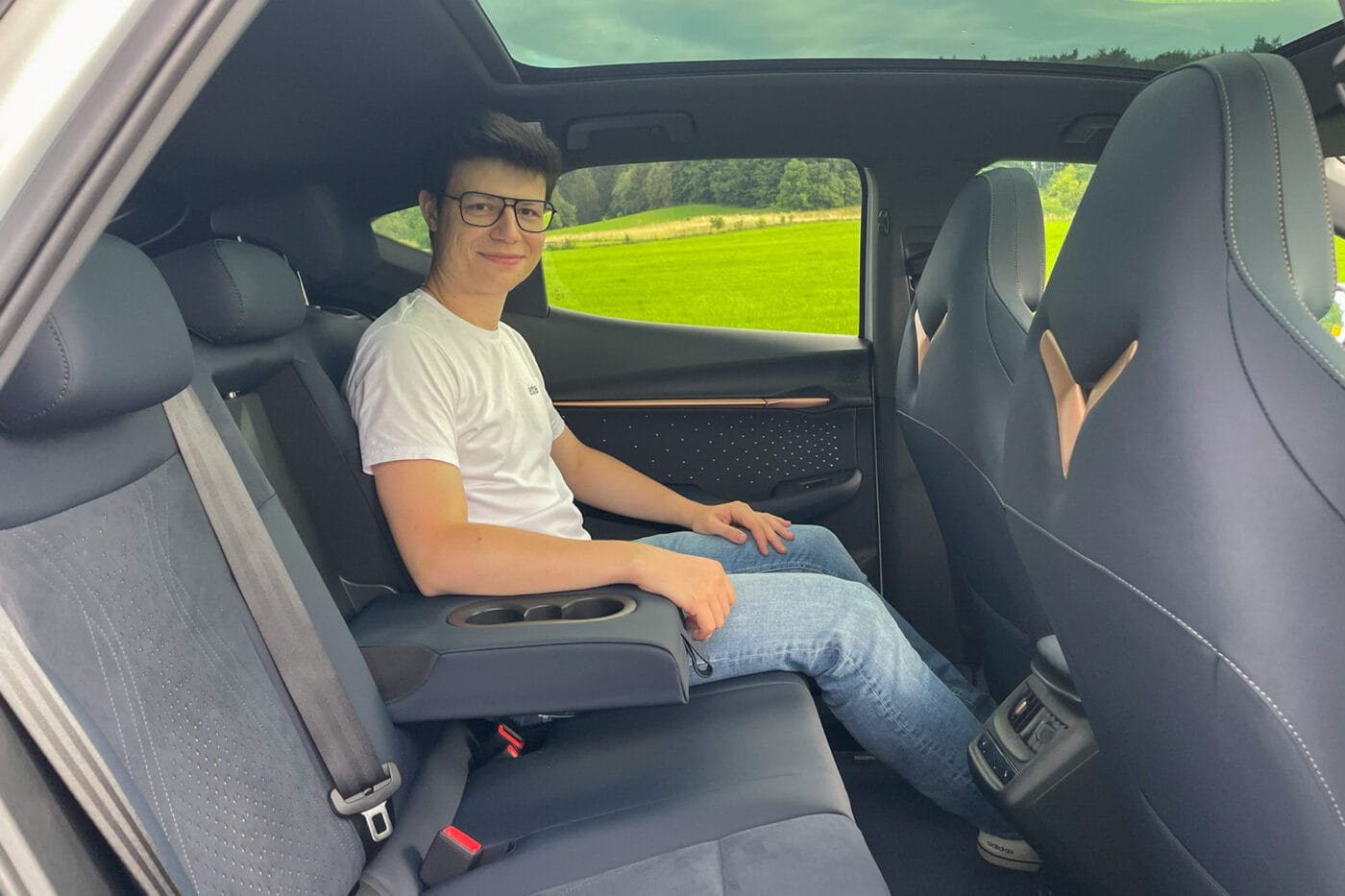
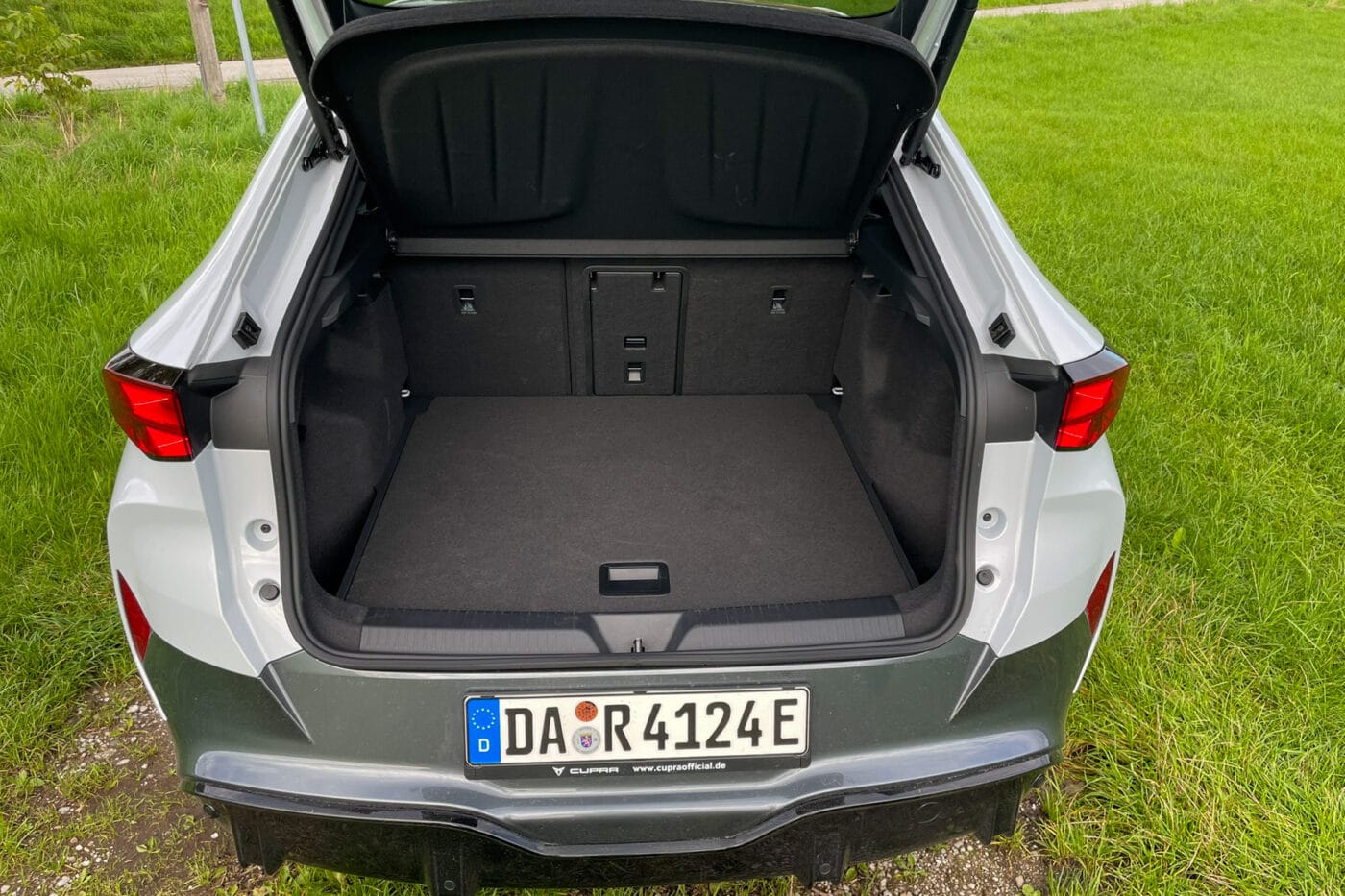
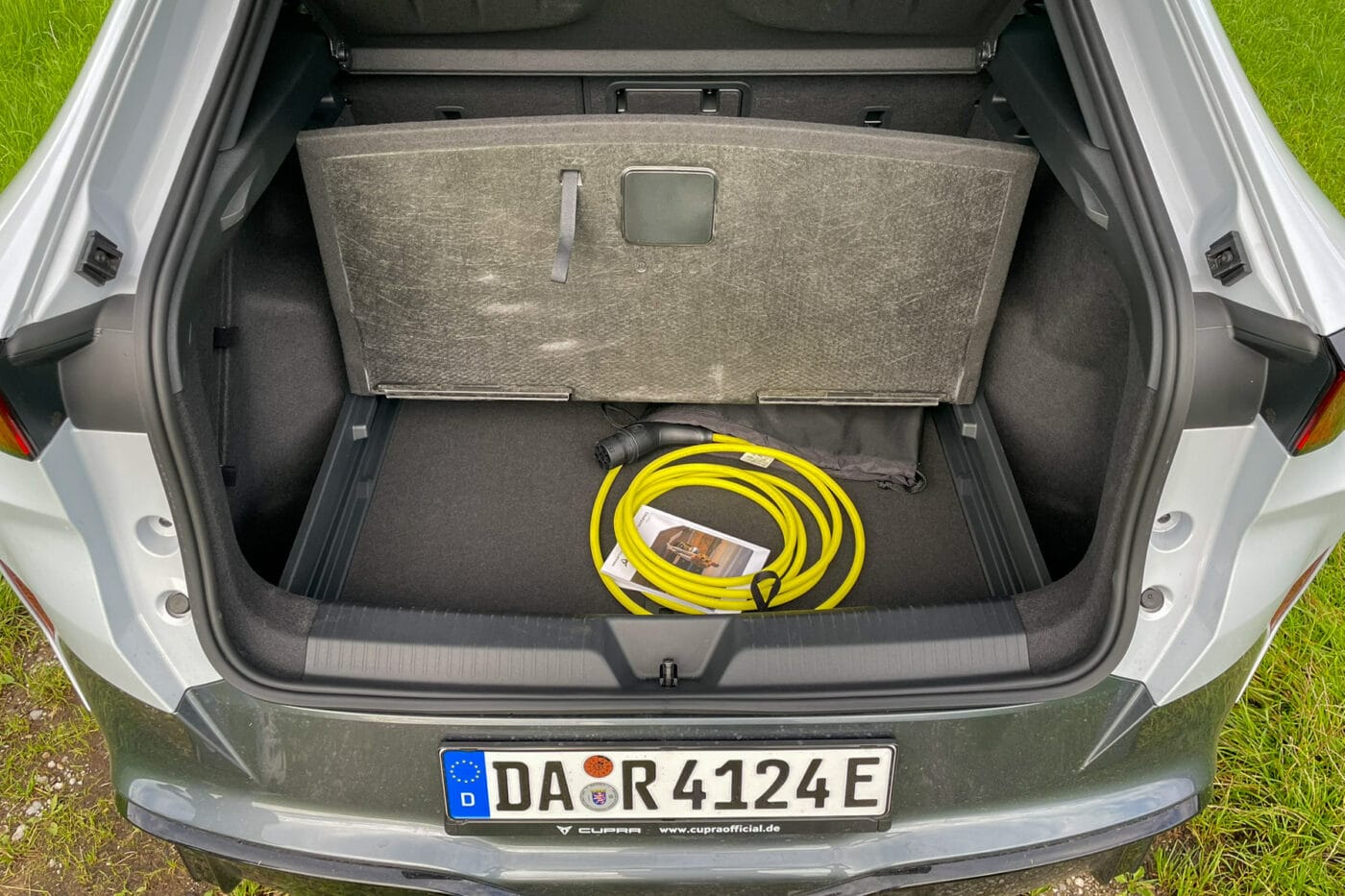
Old MEB weaknesses persist
Unfortunately, some familiar MEB weaknesses are also back on board: the dreaded steering wheel covered in shiny touch buttons and the window controls with an equally pointless touch button for switching between front and rear windows. The simple yet ingenious concept of using four window buttons (one for each window!) has been needlessly ruined here. The ‘REAR’ touch button is reliably activated unintentionally every time, causing the rear window to roll down at every car park barrier like an overwhelmed novice driver. If there is a friendly passenger in the back who can take the parking ticket, this may make sense – but for 90 per cent of users, it’s just a mess.
Charging performance: adequate, not class-leading
The 140 kW DC charging power is also sobering. Although this is offset by a very high average charging power, the 10-to-80-per-cent charging cycle takes 30 minutes with an average of 120 kW. Nevertheless, Xpeng and Kia-Hyundai, for example, have been offering powerful 800-volt systems in this price range for some time now, which are significantly faster. The Tavascan’s charging time is fine for family holidays, as every break with children takes longer. However, it could sometimes be a bit tedious for business travellers in a hurry.
The issue is mitigated by a charging capacity forecast and a heating button: at the touch of a button, the battery is preconditioned, and the system indicates the maximum possible charging capacity and how many minutes it will take to bring the battery to a comfortable temperature.
Efficient in real-world use
MEB vehicles have always been fuel-efficient, but the new AP550 motor has further increased efficiency. In city traffic, the Tavascan effortlessly consumes 13 kWh per 100 kilometres, giving it a real-world range of nearly 600 kilometres. At 120 kph on the motorway, the clock reads 18 kWh/100 km, and even with sporty driving, we hardly exceed 25 kWh/100 km. The overall average at the end of the test was 20.5 kWh/100 kilometres, which corresponds to a daily range of 375 kilometres with the 77 kWh battery while mostly sporty driving in ‘Cupra mode’. With a little more restraint, 400 to 450 kilometres are easily achievable in summer on a single battery charge.
Conclusion: a benchmark for the VW Group
The Tavascan is what all MEB models should have been in 2019 – a mature electric car that plays to the platform’s strengths and outshines ICE rivals. The teething problems are gone, strengths are enhanced, compromises are sensible, and minor flaws are easy to overlook. Assistance systems and the head-up display deliver premium features at a mid-range price.
After years of ridicule and scorn for software problems and technical glitches, the VW Group is returning to its core competencies and showing that it can build really good electric cars; it just has to want it.

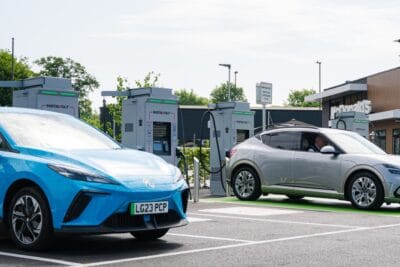
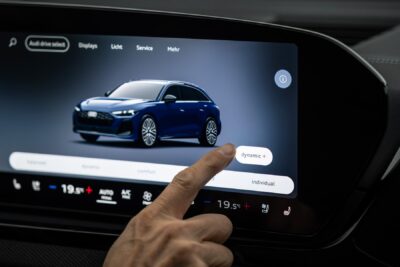

2 Comments